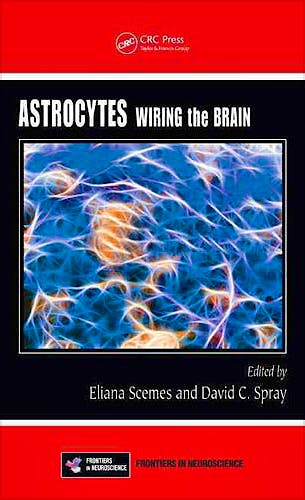

No hay productos en el carrito



Astrocytes. Wiring the Brain
Scemes, E. — Spray, D.
1ª Edición Noviembre 2011
Inglés
Tapa dura
440 pags
1500 gr
null x null x null cm
ISBN 9781439825846
Editorial CRC PRESS
LIBRO IMPRESO
-5%
220,66 €209,63 €IVA incluido
212,17 €201,57 €IVA no incluido
Recíbelo en un plazo de
2 - 3 semanas
Description
Astrocytes play diverse roles in central nervous system (CNS) function and dysfunction, and the connections that the astrocyte makes with other cells of the brain are essential for a variety of important neural tasks. Bringing together contributions from international experts at the top of their field, Astrocytes: Wiring the Brain emphasizes cellular connections and surveys the most current findings on astrocyte activity.
The first section of the book identifies major astrocyte biomarkers and describes how they define the different connectivity domains. Next, the book examines the role of these connections. It explains how their function can be manipulated under physiological conditions and how dysfunction of the connectivity leads to aberrant brain performance. The final section explores the alterations of glia that have been observed in specific diseases of the brain. These include epilepsy, autoimmune encephalitis, Alzheimer’s disease, autism, and major depression. The book identifies key mechanisms responsible for these alterations.
An important and emerging field, astrocytes and their functions are critical to neuroscientists and neurologists, both in academia and in industry, particularly in the search for and development of new drugs to combat a variety of diseases affecting the CNS. As research continues to grow in this area, this volume will spur heightened advances and understanding into the effects of these neural cells on a range of pathologies.
Features
- Presents contributions from leading scientists in the field
- Explores the new concept of astrocytes as central to neural signaling
- Provides current information on astrocyte-related pathologies
- Includes comprehensive coverage of signaling pathways
Table of Contents
- Introduction to Cluster A: Functional Biomarkers at the Interface
- Mature Protoplasmic Mammalian Astrocytes: Morphology, Interrelationships, and Implications for Function; H. K. Kimelberg
- Biomarkers of Astrocyte Microdomains: Focus on Gap Junctions, Purinergic Receptors, and Aquaporins; E. Scemes and G. P. Nicchia
- Adhesion Molecules and their Function in Astrocyte Polarity; S. Carbonetto, E. Camand, and S. Etienne-Manneville
- Contribution of Astrocytes to CNS Immunity: Roles of Pattern Recognition Receptors (PRRs); N. Esen and T. Kielian
- Introduction to Cluster B: Establishment of Functional Units: Multimodality at the Tips
- Neuroglial Networks: Glial Wiring Also Matters; C. Giaume
- Astrocyte-Neuron Communication: What Goes Wrong in Pathology? D. Rossi and A. Volterra
- Blood-Brain Barrier and the Neural Vascular Unit; R. Dermietzel and D. C. Spray
- Oligodendrocytes: Gateway to the Panglial Syncytium; K. G. V. Davidson and J. E. Rash
- Microglia and Non-CNS Cells in Paracrine Signaling and CNS Immunity: Effects of Pathogens, Age, and Life History; E. H. Wilson and M. J. Carson
- CNS Pathology: Disruption of Astrocyte Connectivity: Introduction
- Astrocytes in Epilepsy; C. Steinhäuser and G. Seifert
- Astrocyte Involvement in the Acquired Demyelinating Diseases; S. E. Lutz, C. S. Raine, and C. Brosnan
- Neuroglia in Alzheimer’s Disease; J. J. Rodríguez Arellano, C. Matute and A. Verkhratsky
- The Role of Glial Pathology in Autism; R. E. Kneeland, S. B. Liesch, T. D. Folsom, and S. H. Fatemi
- Astrocytes in Major Depressive Disorder and Schizophrenia: Pathophysiological and Therapeutic Aspects; M. J. Schwarz and A.-M. Myint
- Index
Authors
Eliana Scemes obtained her PhD from the University of Sao Paulo (USP), Brazil, and joined the faculty of the Institute of Biosciences at USP, where her research was primarily on nervous systems of jellyfish and the marine mollusk Aplysia. She spent two sabbatical years at Einstein and joined the faculty at Einstein College of Medicine in 1997, becoming Professor in 2010. Her current research interest is in the role of connexin and pannexin channels in astrocytes and brain pathophysiology.
David C. Spray obtained his PhD from the University of Florida College of Medicine and after a postdoctorate, joined the faculty at Einstein College of Medicine, where he became Professor of Neuroscience in 1986 and Medicine (Cardiology) in 1993. His major research interest is in gap junctions, primarily in physiological studies of their modulations and functions in the nervous system and elsewhere, and also in studies of regulation of gap junction and other genes in various pathological conditions, including parasitic infections causing Chagas disease and cerebral malaria.
© 2025 Axón Librería S.L.
2.149.0